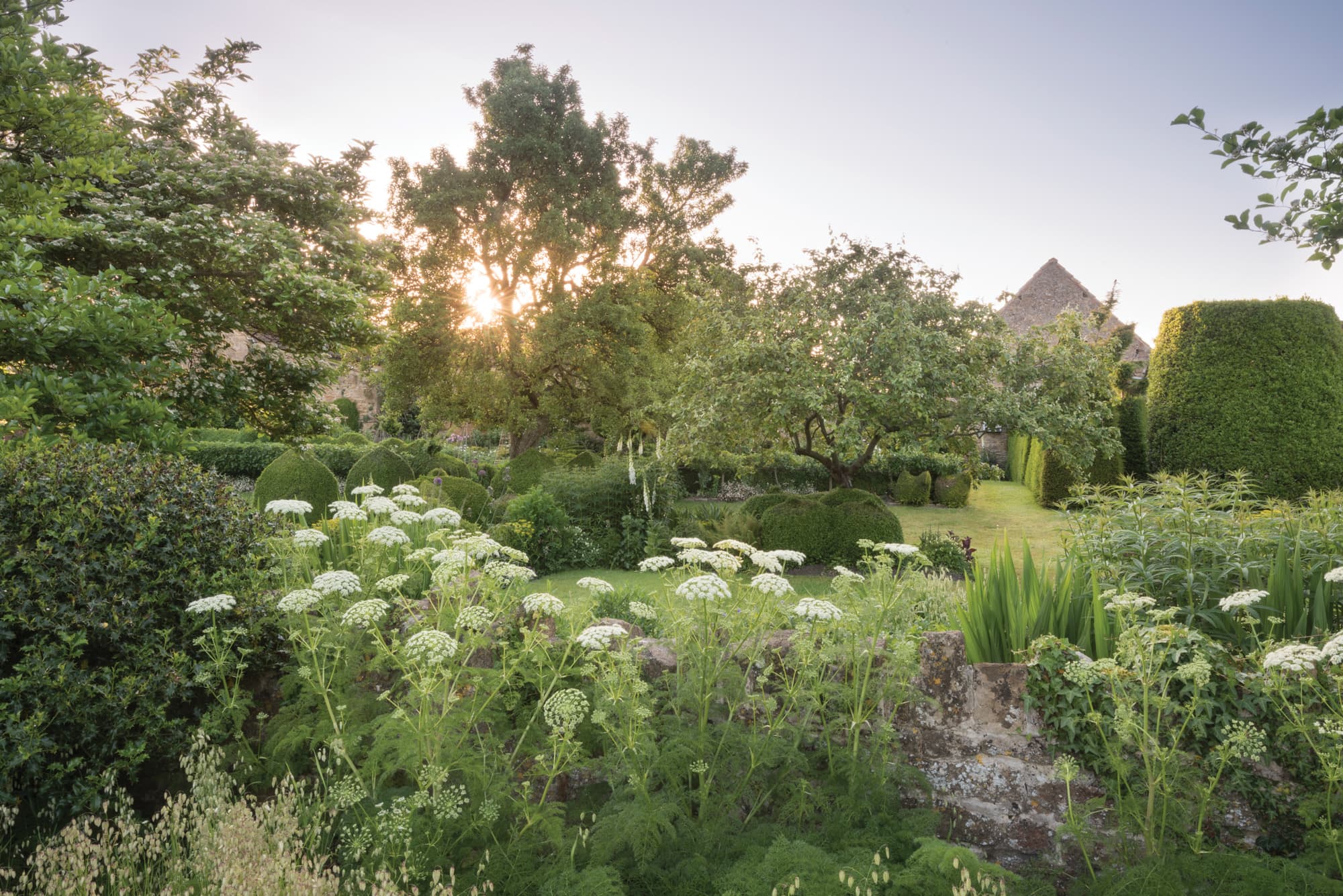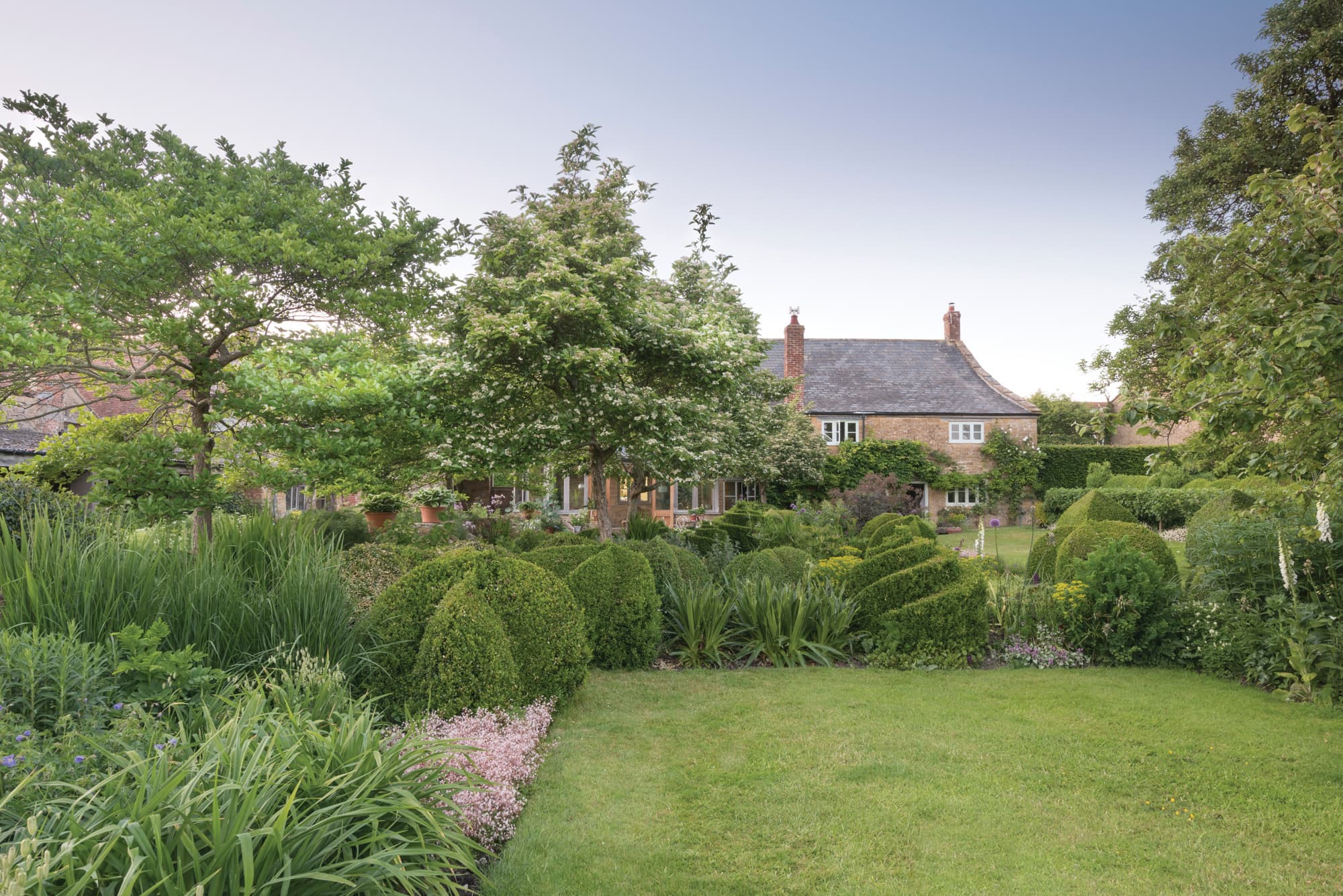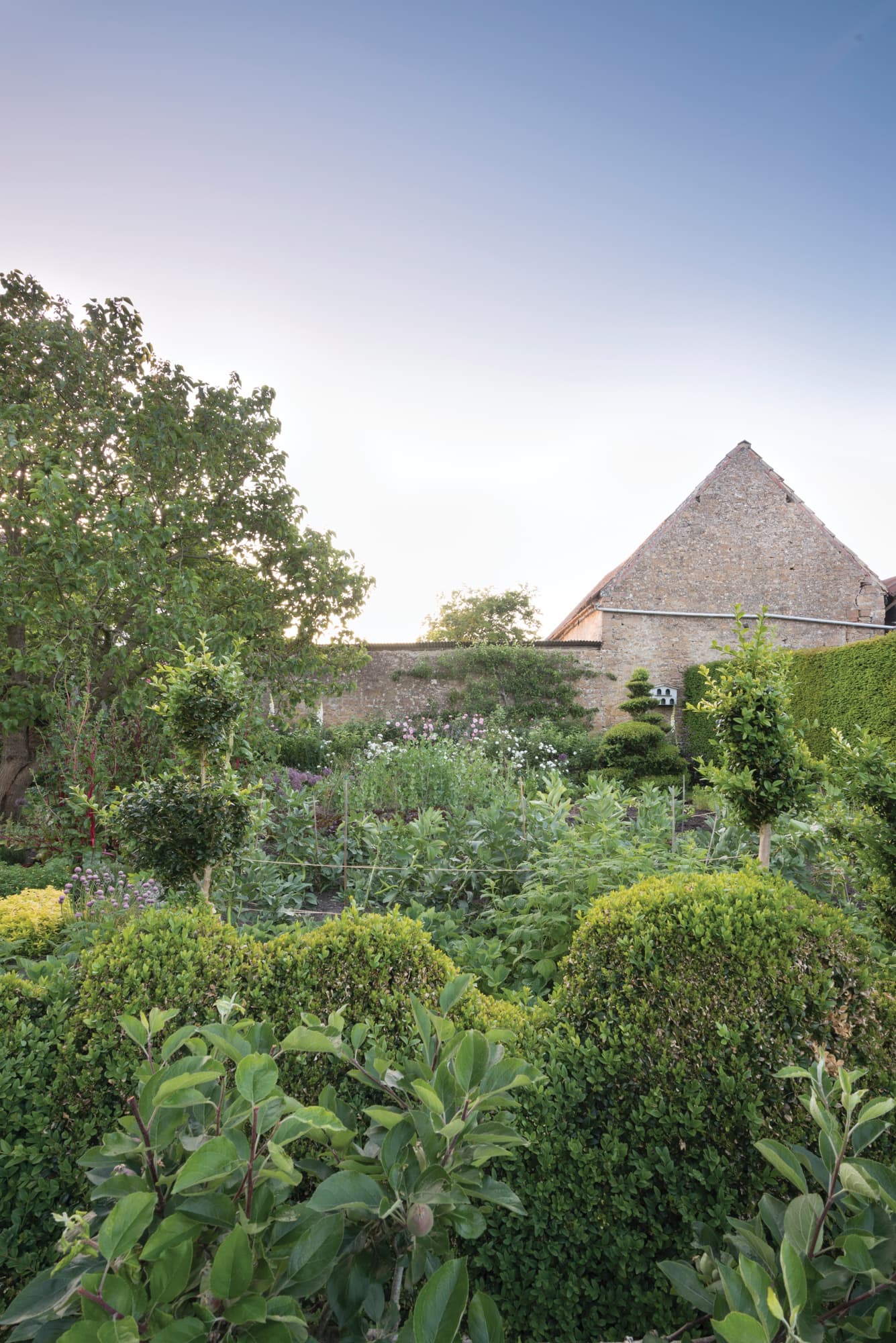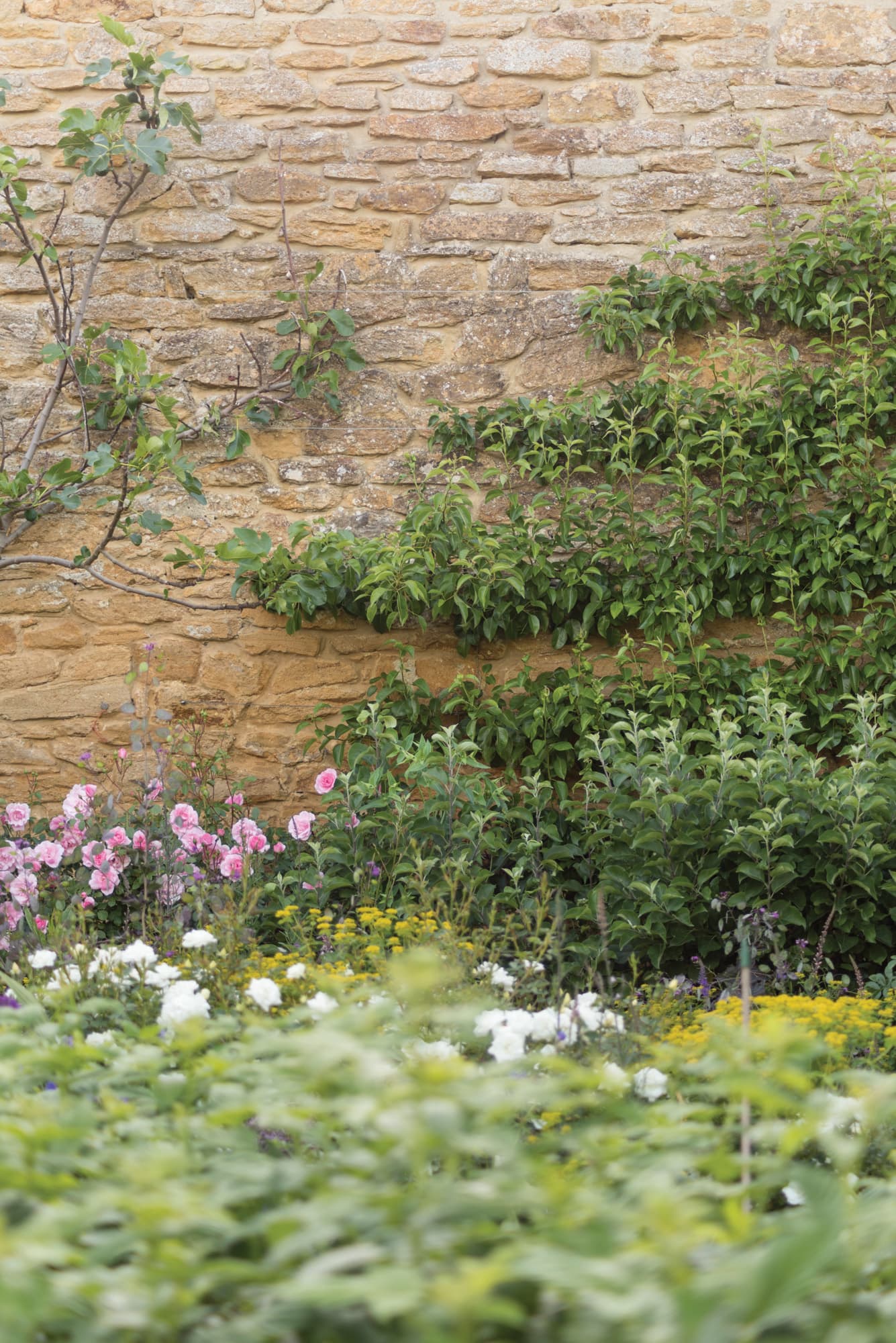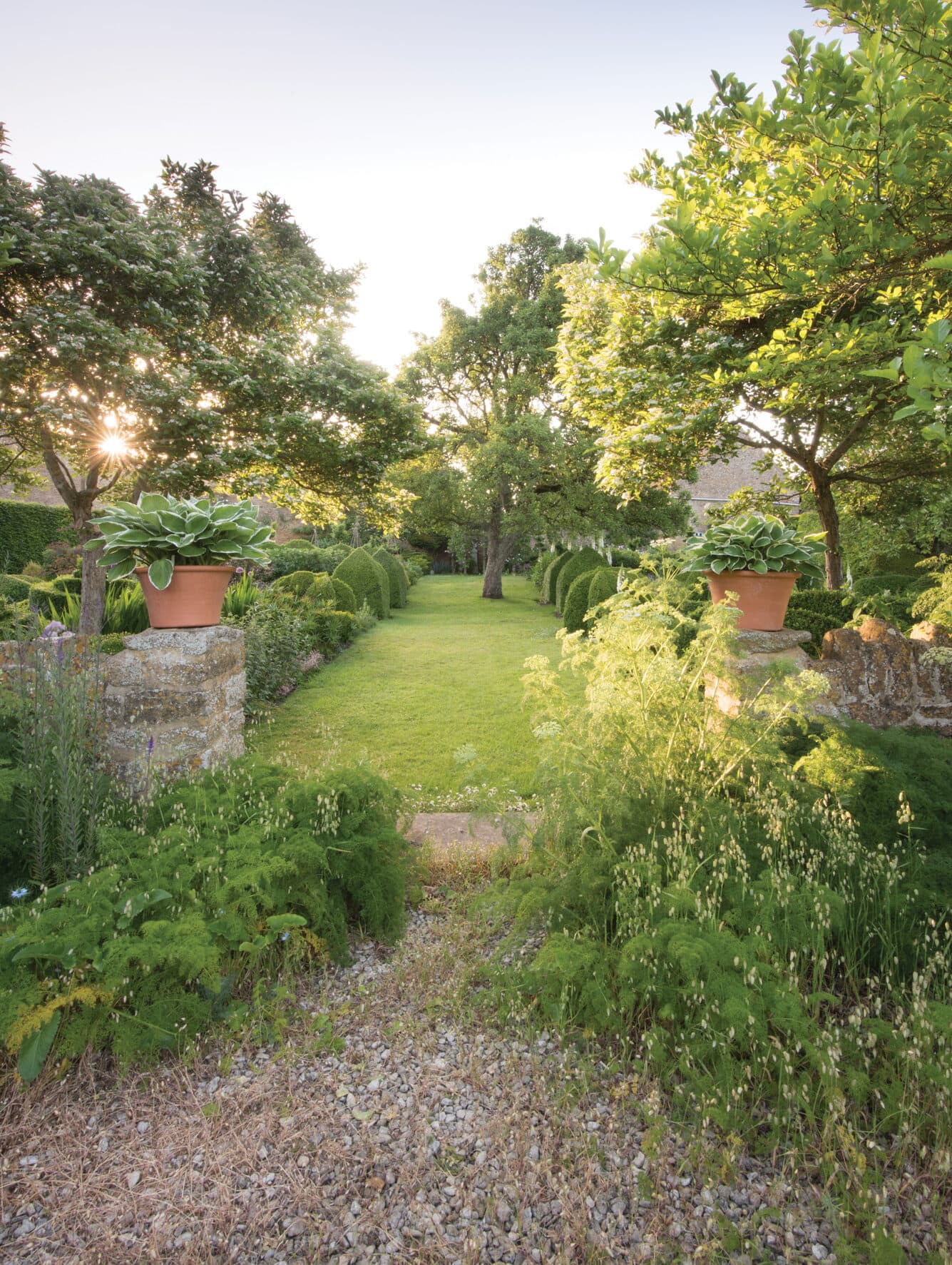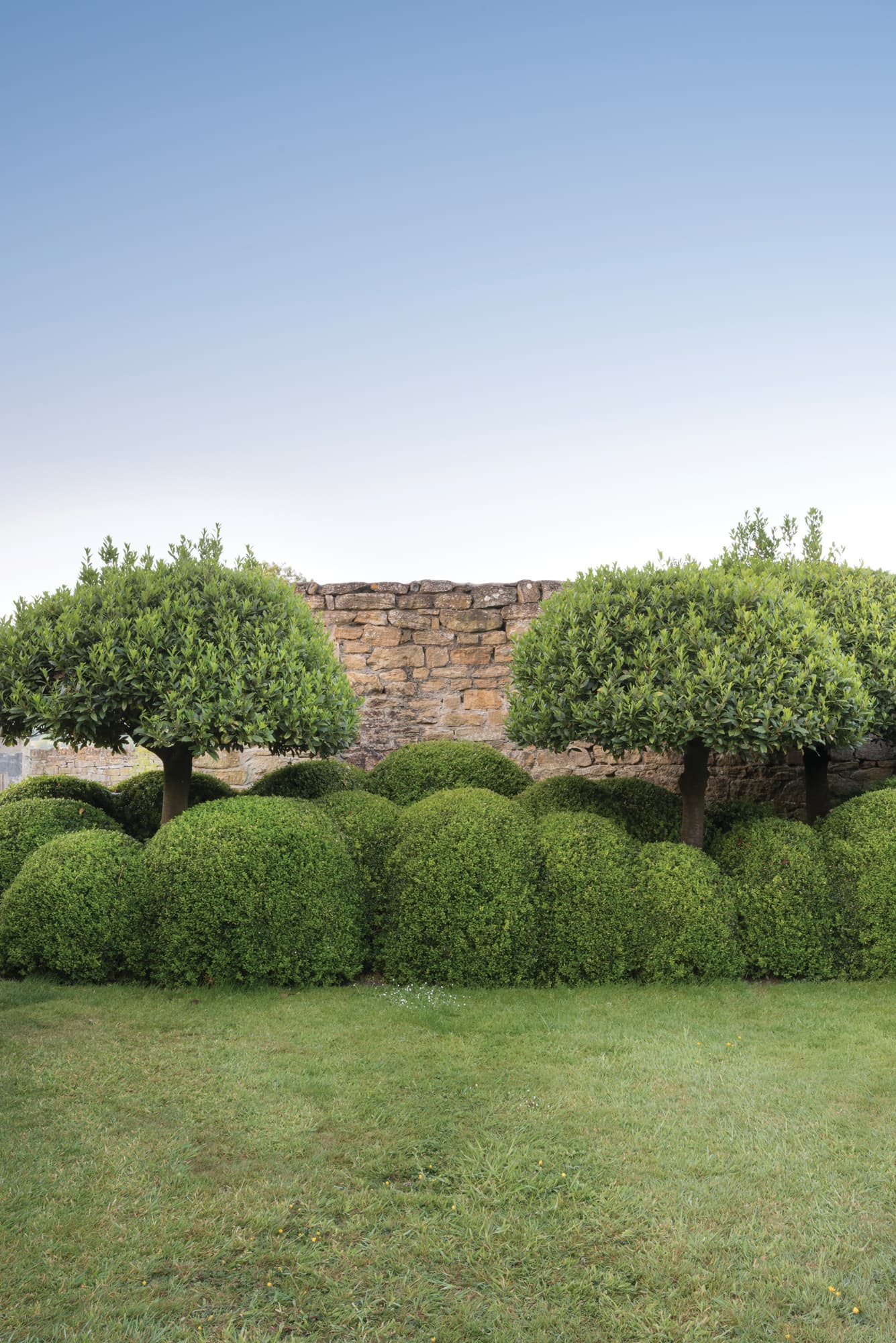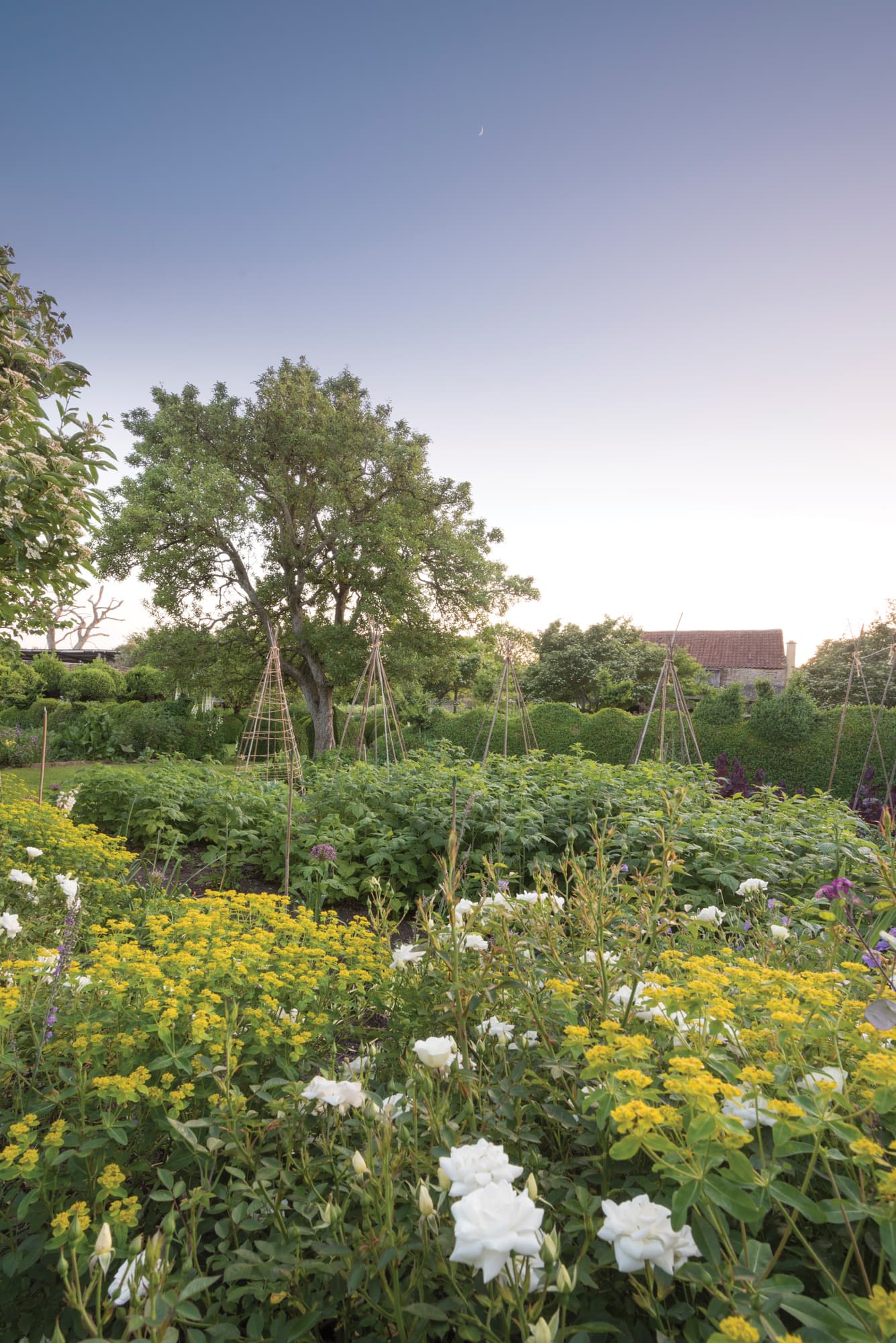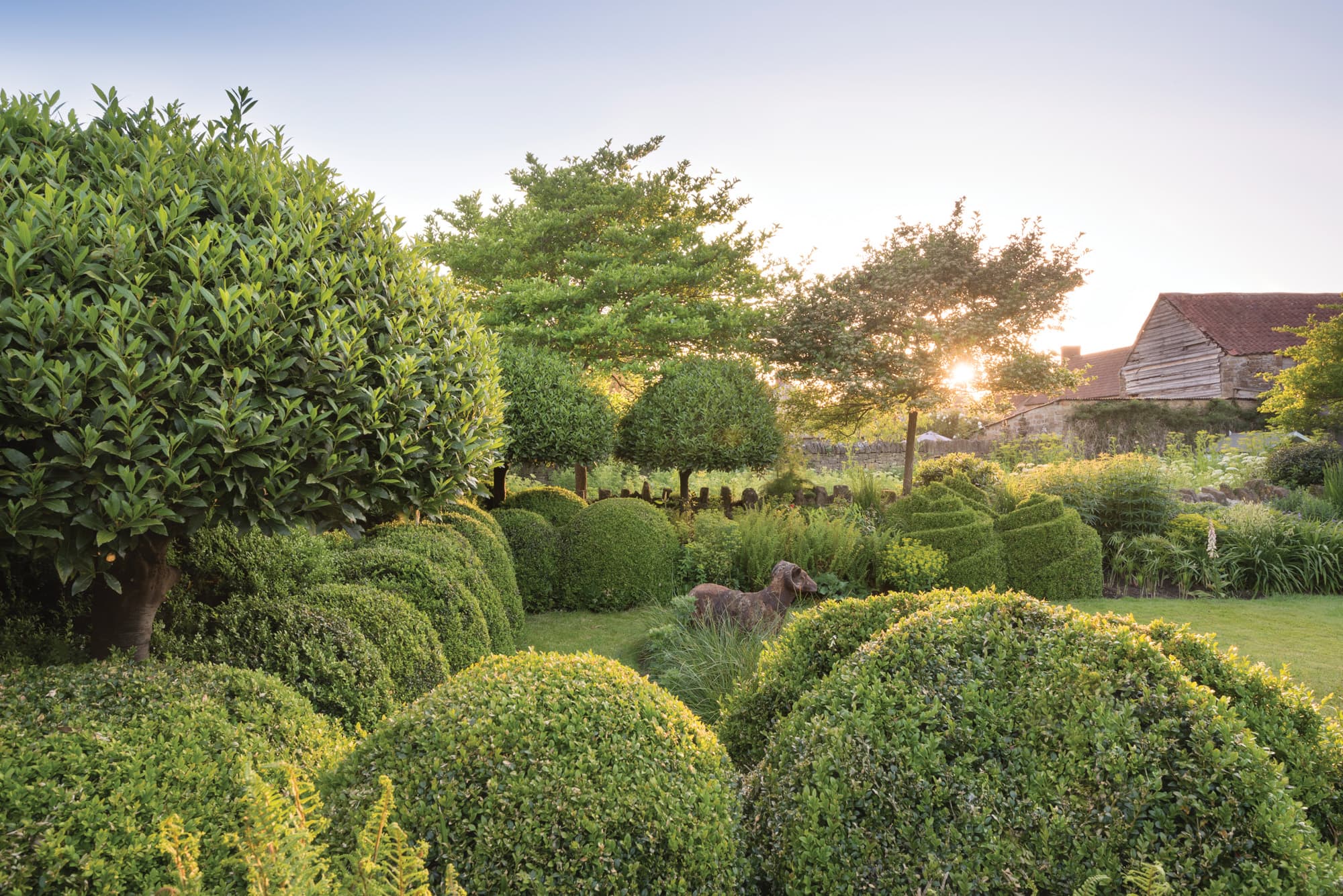With its flow of quirkily shaped box topiary nestling under verdurous bay, quince, and hawthorn trees, its towering licorice root and delicate Mexican daisies, and its scattered softness epitomizing cottage planting, Louise Dowding’s sprawling Somerset garden, in the southwest of England, is living testament to the power of time and patience.
It has taken the British garden designer, descended from a long line of avid green thumbs (many generations of whom were doctors who grew medicinal plants), almost 30 years to nurture the seven-acre plot that surrounds the centuries-old hamstone house that she shares with her husband, Fergus (an architectural historian), daughters Agnes and Octavia, and myriad animals including a Cairn terrier named Toto, a pair of pigs, three “naughty but enchanting” White Campbell ducks (Sybil, Dyllis and Snowy), and 20 egg-laying chickens.
Today, while it might seem as if the plants “have completely taken over with wild exuberance,” the garden is in fact “tightly controlled and carefully edited,” says Dowding. She sees herself as its conductor: “I’ll point the baton here and there, but the way that everything grows and pulls together is up to the plants and not me. It is often so much better than I could have possibly imagined, like a kind of magic.”
It’s hard to believe that when the Dowdings first arrived at Yews Farm—named after the pair of towering hedges that flank the front walkway—in 1996, there was very little to the garden except wiggly borders, lawn, and an ancient pear tree. Dowding pulled it all out (save for the cultivar), and started afresh, creating a simple, practical “sort of cruciform” of borders and grass paths to make it easy to move about.
While the garden’s overall layout is symmetrical, things are intentionally haphazard within its borders “with no balance between any of the plants,” says Dowding, citing the 17th-century gardens at Levens Hall in Cumbria as her inspiration. “There has been centuries and centuries of growing which probably started symmetrically, but over time, plants have died or they’ve grown in an erratic fashion, and I tried to reflect that here,” she explains. “I wanted to make it look like time has gone faster than it really has, as if things have grown out of control and taken their own path so that the eye is constantly moving through the garden.”
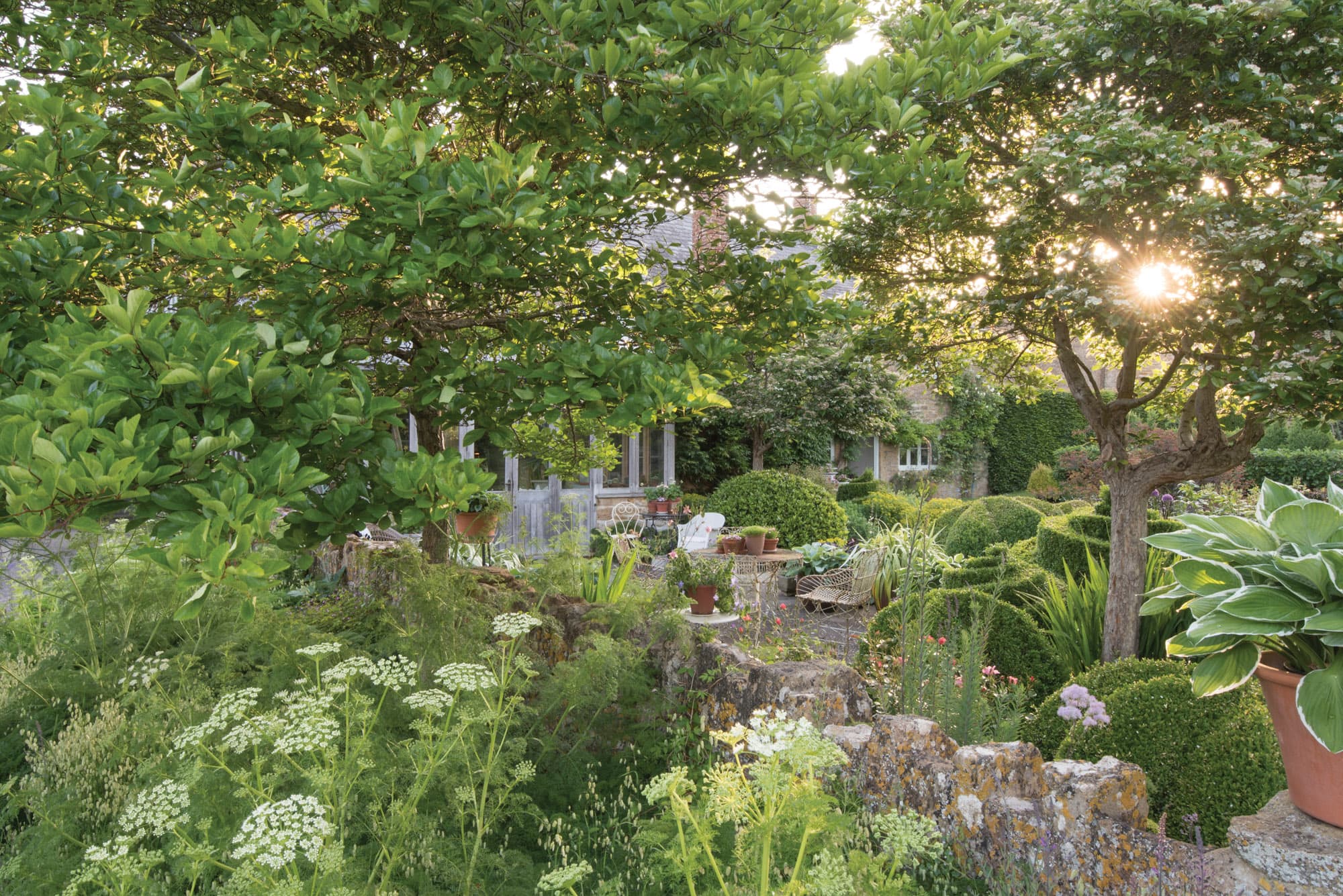
Each day at sunrise, light filters in through the leaves of the ‘Prunifolia’ broad-leaved cockspur thorn and ‘Carrierei’ hybrid hawthorns behind the house. The trees, whose spring blossoms give way to berries each autumn, “don’t scream for attention, which I quite like,” says Dowding.
Mimi ConnolleyDowding’s biggest challenge has been the shallow soil, caused by an old farmyard stone foundation lying only a foot underneath much of the garden. “The planting has evolved enormously as I’ve understood the conditions and my soils a lot better,” she reflects. Before landing on the topiary, for example, an experimentation with grasses—made popular at the time by the likes of Dutch garden designer Piet Oudolf and writer Noel Kingsbury—proved short-lived. “I lived with a lot of different grasses for about three years, and I was very excited by them, but actually they were wrong for our climate where we are quite wet, so they just sat in the wet and drooped,” she sighs. “From November until May or June, they looked brown and utterly miserable—it was like watching a compost heap!” Dowding replaced them with common boxwood, which has proved much happier in the area’s very thin soil. Two decades later, they’ve grown large enough to be trimmed into a variety of shapes, from birds to helter-skelter swirls—and even some bawdy bosoms. (“They were a bit much,” giggles Dowding, who has since turned them into Russian minarets.)
A kitchen garden close to the house produces a perennial abundance of asparagus, runner beans, raspberries, and strawberries, while higher intensity vegetables—including courgettes and potatoes—are grown away from the house in the fields where the soil is better. Some varieties, such as the artichokes, have been chosen more for their aesthetic appeal than for their taste. “It really annoys Fergus, who keeps asking me when I’m going to eat them,” Dowding smirks.
The visual pleasure that the garden brings Dowding is its biggest success, she says. “I’m constantly working towards a state of perfection every year, but I never get there.” But perhaps it’s best that way: “If the garden got to where I wanted it to be, I’d lose all interest. It would just be about maintenance rather than developing and learning. There’d be no adventure left.”
-

The delicate blooms of Erigeron karvinskianus, or Mexican daisy.
Mimi Connolley -

Potted ‘Rosebud Appleblossom’ geraniums and ‘Aya San’ hybrid rhodixis sit atop a weathered oak block.
Mimi Connolley -
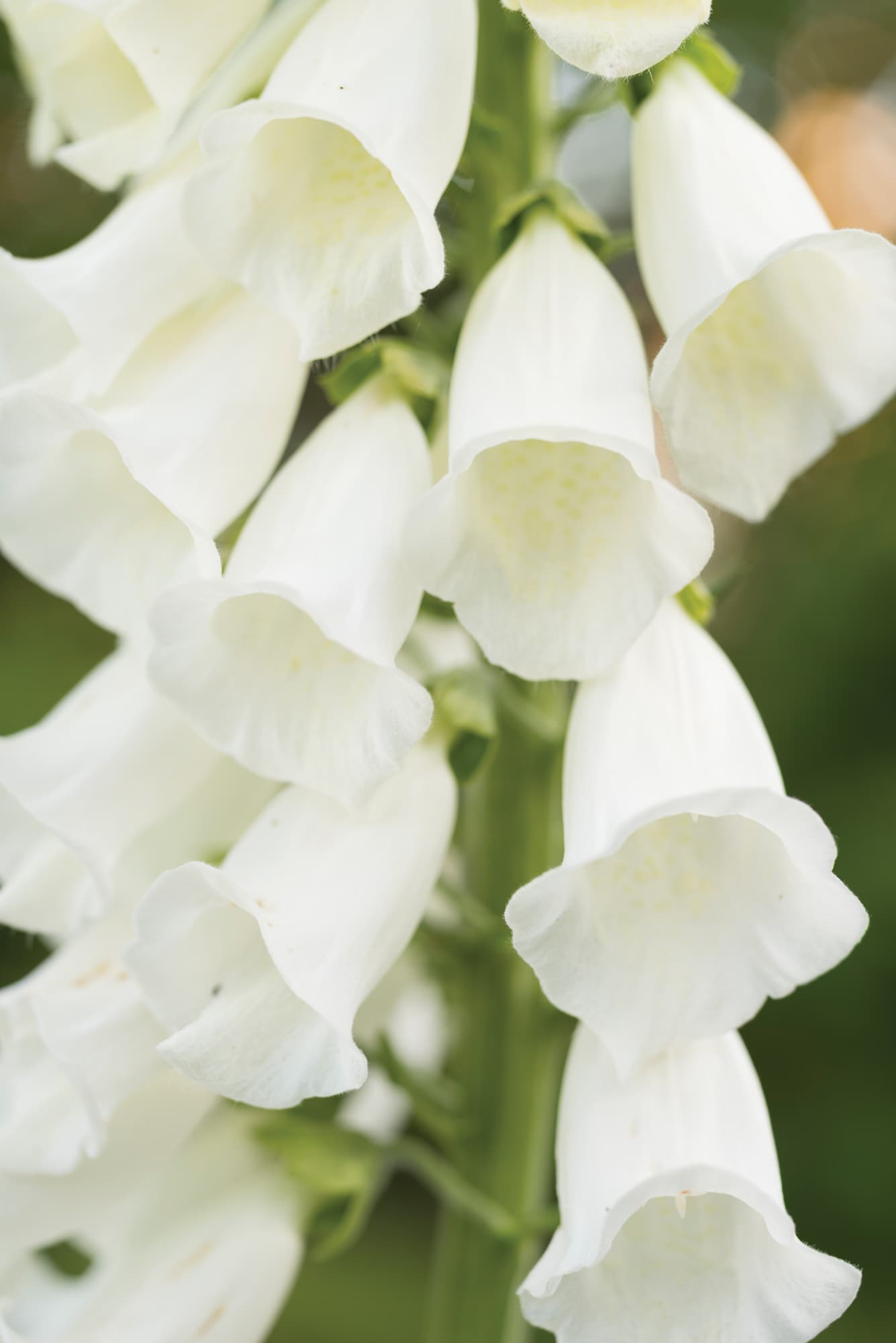
‘Alba’ lady’s glove can reach up to four feet in height.
Mimi Connolley -
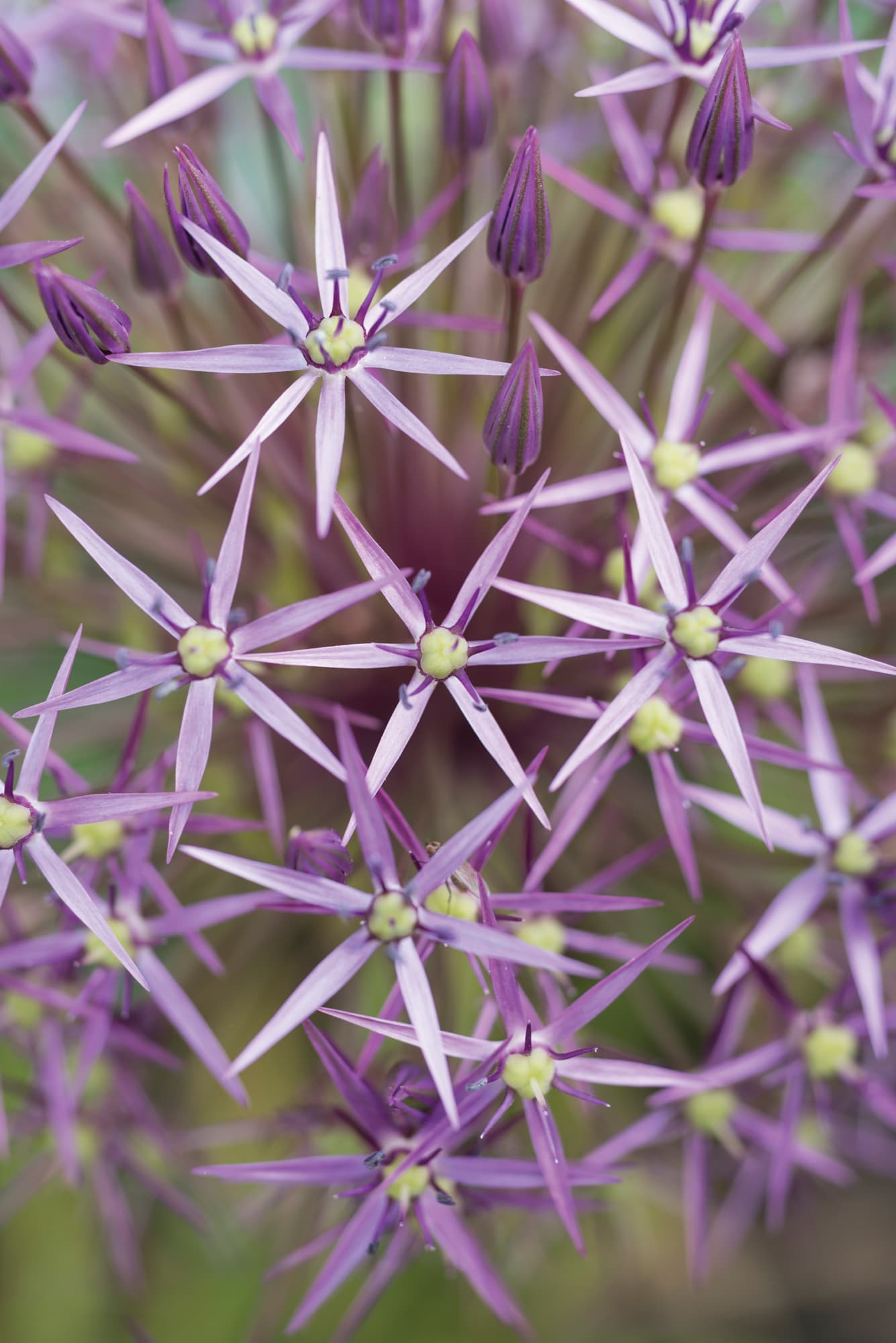
Aptly named Star of Persia alliums offer vibrant petals.
Mimi Connolley -
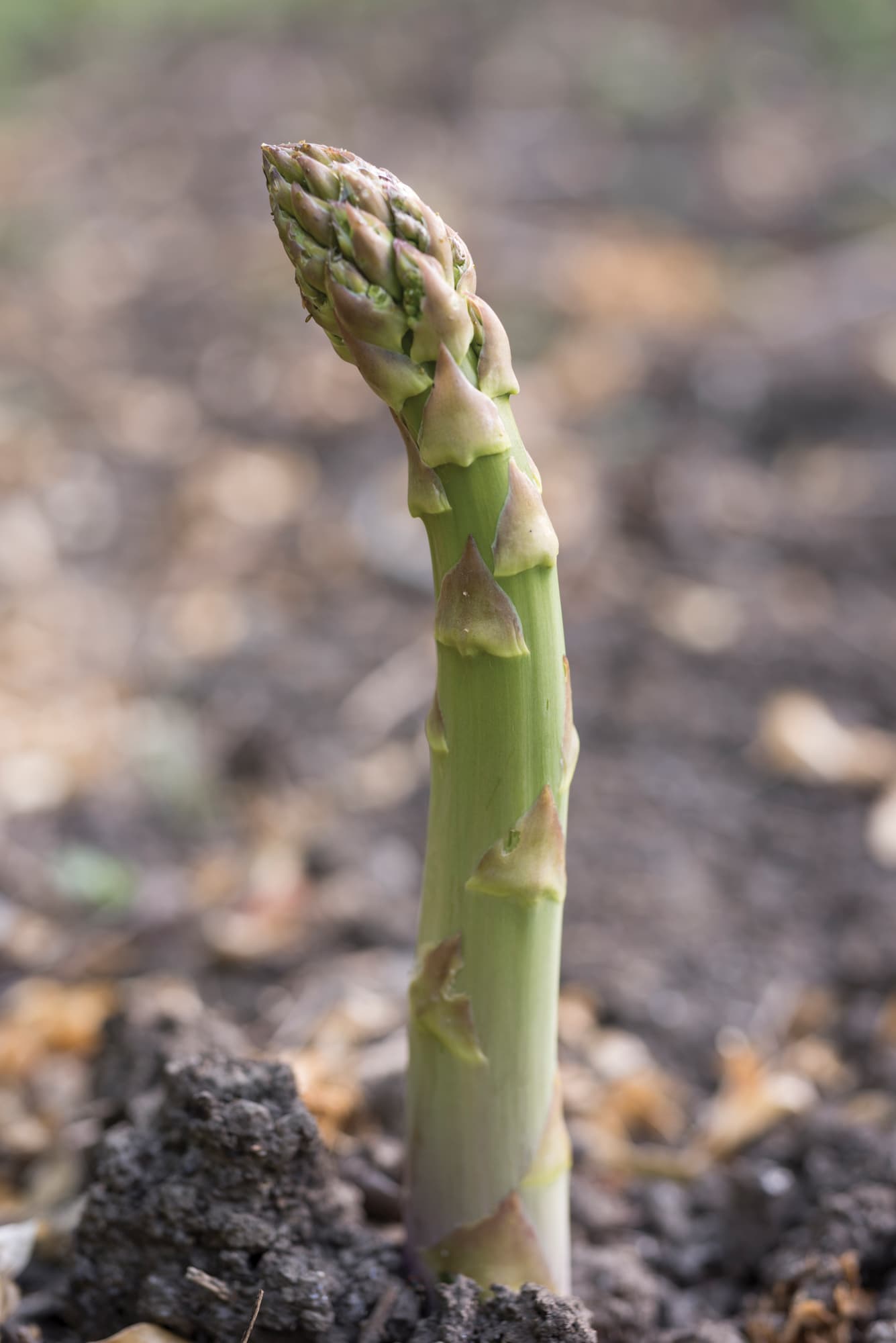
‘Connover’s Colossal’ asparagus is among the many vegetables that Dowding grows.
Mimi Connolley -

Pale-pink blossoms grow from the Saxifraga x urbium, or London Pride.
Mimi Connolley
THIS ARTICLE ORIGINALLY APPEARED IN VOLUME 10 OF FREDERIC MAGAZINE. CLICK HERE TO SUBSCRIBE!















